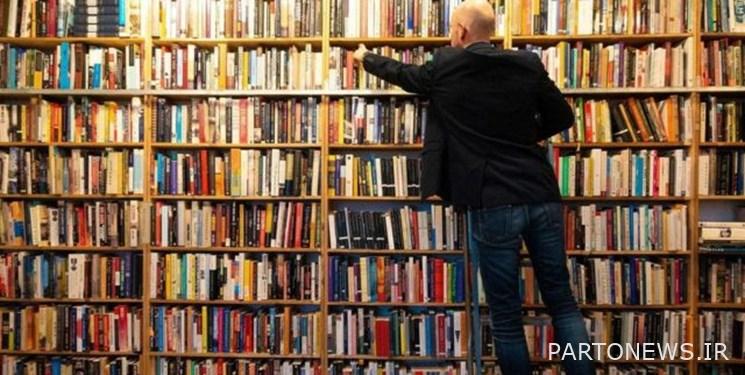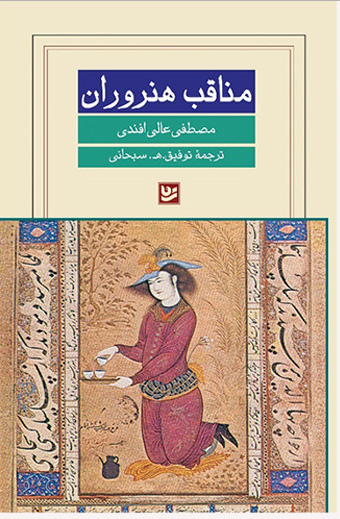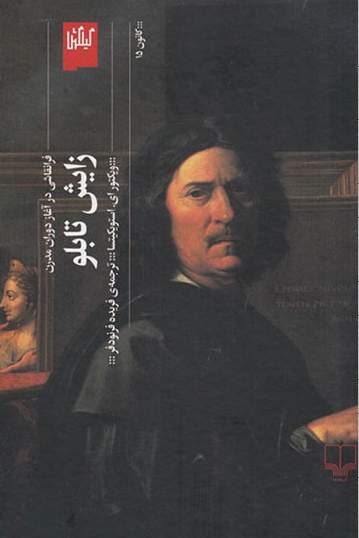Take a look at some important books on what art is / from Managheb Honarmoun to the birth of paintings

Fars News Agency – Art and Media Group: According to Shakespeare, “the book is man’s greatest invention,” and in Tolstoy’s view, “there is no pleasure in the world equal to the pleasure of reading,” Cicero says, “A room without a book is like a body without a soul,” and in the words of the leader of the revolution. “Today, reading books and learning science is not only a national duty but also a religious obligation.”
Mircea Eliade (phenomenologist of religion and mythologist) sees the book as the carpet of Solomon that takes us from the objective world to another world and acts as a myth for the book, books can expand the boundaries of our world and help live in a better world do.
Finally, the book improves brain function and reduces stress, strengthens memory and increases imagination. Develops critical thinking skills, expands vocabulary and improves writing and even communication skills. Increases concentration and plays a significant role in human health and self-confidence. However, reading statistics in Iran are less than 2 minutes, and not only is it no longer worth reading a book, but we also see fewer students who have a book in their hand or have read a book in the number of fingers of one hand during their lifetime. Even theoretical courses in disciplines such as art (painting, photography, graphics, illustration, costume design, handicrafts, art research, etc.) have been reduced to lean pamphlets or a handful of questions for the final exam, when even professors are informed. They do not have newly published books, what else is expected from families to prioritize the book in the household basket.
Unfortunately, books and reading are not cultured in our society as they should be. Our society today is one in which money has become everything and capitalism has cast a shadow over everything in life. Libraries and bookstores are becoming more and more dilapidated and gigantic passages are expanding. Reading and reading have also been reduced to flipping through Instagram and pecking at endless short sentences and a few naive lines about success and yellow psychology. Humans have become machines of desire that pursue and pursue no purpose other than money.
However, every year during the “Tehran International Book Fair” season, enthusiasm is formed among Tehran citizens and city students. And unlike all studies and research, in the ten days of the exhibition, book sales records are broken and finger-pointing experts say, if the per capita reading statistics are such a disaster, then where does this enthusiasm for books come from? It seems that this issue can be studied in depth by those in charge of book affairs, and from it, instructions (albeit non-grammatical) can be extracted for the promotion and expansion of books and reading.
During the 33rd edition of the book fair, Fars News Agency’s Art and Media Group tried to introduce some of the most important books of art theory, published during the last two years, to the interested parties. Along with these reports, this report introduces some of the most important newly published books in the field of theory, philosophy and aesthetics of art.
Introducing the book “Introduction to Art”
Answer to the question “What is art?” It has been talked about since time immemorial and has been talked about from Plato to our contemporaries, but perhaps a definite answer can never be reached because art, like all human products, is as diverse and colorful and unpredictable as thousands of summer seeds in the soil of art. It is resting to sprout in the inevitable spring. But Laurie Schneider-Adams has tried to acquaint the audience with various aspects of art in the book Introduction to Art (2012) in order to obtain a meaning from it. He says in the introduction of the book that all the great civilizations have had their art and all these societies have influenced each other’s art, so it is not surprising that we occasionally find a corner of the art of one civilization in the work of another civilization and at another time, so we need to know “What exactly is art?” In the first chapter of the book, he tries to consider all the activities known as art to answer this simple and complex question, but when we talk about the nature of something, we look more around it, so in the second chapter, inevitably a brief history. Western art is studied, but the author first refers to art in the prehistoric or Stone Age, as well as ancient civilizations in Asia and Africa, and then to Greece and Rome, to the Middle Ages, the Renaissance, modern art, and finally contemporary Western art; This review is in such a way that the audience becomes acquainted with both important artists and works, as well as currents and schools of historiography. After exploring the meaning and evolution of art, it is now time to explore its origins, and Laurie Schneider-Adams offers reasons such as personal inspiration or myths and legends so that the audience still knows that there is no clear answer about art.
Finally, in the fourth chapter of the book, the audience becomes acquainted with the concepts of art, and the author of the book tries to give a simple definition of form and meaning or other artistic terms in order to achieve the goals of art. In the end, although the reader of the book Introduction to Art realizes that there is no clear answer to why art is involved, he can also become acquainted with the geography and field of art, and this familiarity gradually replaces the clear answer.
Introducing the book “Managheb Honarvan”

The evolution of calligraphy is still not very clear, but what Iranian and Islamic sources show is the importance of calligraphy in writing. It used to be that literates and scholars were among the calligraphers of their time, so it is not surprising that we always come across beautiful and beautiful lines among the manuscripts, because the form of speech was reflected in this calligraphy. But today we are less in the past of this art and its artists and you said that we have accepted that it was a good line from the beginning. The book Managheb Honarvan was written by Mustafa Ali Effendi during the Ottoman rule and in it he tried to review the history of calligraphy and enumerate the great men of this art. After discussing calligraphy and calligraphy and its types, he considers it necessary to talk about the life story of calligraphers in order to consider such calligraphy as the summary of all good qualities. He begins his work with the scribes of revelation because they were the first to write the word of God and thus showed the necessity of good handwriting. He then enumerates the masters of the six Islamic pens and the seven Roman pens in order to reach the commentators, and then to talk about the Divani script, and finally to the illustrators such as Mani and the hadith of his life, as well as to the designers and illuminators. The interesting point in Managheb Honarvan is that the author has tried to clarify the course of writing and the ethics and character of the scribes from the perspective of calligraphy so that the reader of the book knows that various books are composed of a large number of artists and have a long life. Also, Persian calligraphy has always been accompanied by Persian poetry and literature and has added to its beauty and depth; Many of us use visual memory to remember Persian poems.
There is a good line left by our sages, and our fathers also learned to read and write well in school. However, few resources are available to us, and it is from Bakhtiari that accompanying the Persian script with the Divan of Poets is valuable. The depth of the poetry of these poets has been a joyous place for our artists to immerse themselves in it and find a gem in it and add to its beauty.
Introducing the book “Birth of a painting”

Few would have thought that the beginning of a movement in Europe in the early sixteenth century with the aim of destroying Christian images was the beginning of a revolution in art, especially painting, as artists who had been so struck sought to find a way to original painting or Reach the real. After that incident, the trial and error of countless painters in Europe, especially the Netherlands, originated in the late seventeenth century. In fact, the modern era in Europe coincided with the popularity of paintings, and the frame of the painting was considered the border of reality of that art. So it was not just a matter of painting technique but of metamorphosis in the act of seeing because countless events had taken place that made this metamorphosis possible so that the canvas could finally experience the rotations that determine the beginning and end of the painting. This simultaneous movement of the painting and the subject’s landscape in the West can be traced back to Descartes’ delay in seeing the eye and thinking more about vision. According to Victor Stoikisa
(1949) Painting is a late phenomenon whose history is on the one hand synonymous with the history of real painting and the development of the age that we know as modern art and has fruits such as recognizing inanimate or transcendental nature and on the other hand the presence and importance of the painter. As an artist and the subject of the work, it is in opposition to the audience of the painting. In the following and in three different sections, he shows the beginning and development of the painting in such a way that the audience of the book “Birth of the painting, Frangashi” at the beginning of the modern era (1993), in addition to recognizing this process with the concept of painting, It is during this evolution that the artist painter and a painting full of various layers of meaning are born that no longer serve anything but the art of painting itself. Thus, the birth of a painting is not just a text about the history of art or painting and even a painting, but an attempt to observe a great change in European culture and art under the pretext of the creation of a painting, a change that later became known as modern. The heart of culture was planted and in this way we can even say modern art
It is the same as in classical art.
End of message /
You can edit this post
Suggest this for the front page

